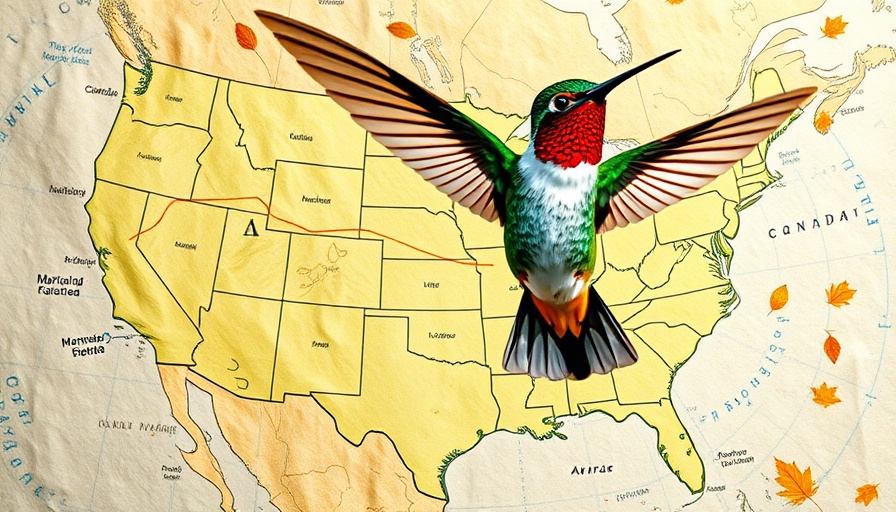
The Fascinating Journey of Fall Hummingbird Migration
As summer gives way to autumn, a remarkable natural event unfolds: the fall migration of hummingbirds. Not just a seasonal change, this migration is a critical journey for these tiny birds, which are among the smallest in the world. With an estimated 10 hummingbird species spending their summers in Canada and the northern United States, many begin their long, solitary journeys to their winter homes as temperatures cool and food sources dwindle.
What Triggers The Migration?
The hummingbirds' departure is closely tied to environmental cues. As the season shifts, the days shorten, and food sources like nectar and insects become scarcer. These diminutive birds have an extraordinary sense of when to head south, although their timing varies based on their summer locations. In warmer climates, some hummingbirds remain year-round, ensuring local gardens remain vibrant with life.
Monitoring Hummingbird Movements
Unlike many migratory birds that travel in flocks, hummingbirds are known for their individual journeys. Observers may notice the absence of these beloved birds in their gardens rather than seeing them migrate. For homeowners keen on tracking hummingbird activity, using innovative tools like automated cameras attached to feeders can provide insights into their habits and timing.
Where Do Hummingbirds Go in Winter?
During winter, many hummingbird species retreat to the southern and western United States, Mexico, and parts of Central America. The migration maps that track their sightings can be invaluable to those interested in conserving their natural habitat and ensuring they have sufficient resources available when they arrive in the spring.
The Broader Impact of Seasonal Changes
Understanding the migration patterns of hummingbirds is not just academic; it affects local ecosystems and gardening practices. Homeowners in migration paths can play a part in this fascinating cycle by providing feeders filled with sugar water, essential for the birds' energy requirements.
As you prepare your garden for the upcoming changes in wildlife, consider the importance of sustainable practices. By implementing energy-efficient solutions, such as windows that stop heat loss and exterior glass coatings that shield against UV damage, you can create a comfortable environment for both your family and the creatures that rely on your yard.
 Add Row
Add Row  Add Element
Add Element 



Write A Comment